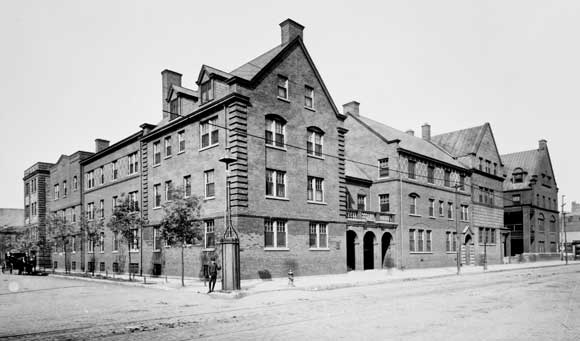|
Moderated by NW Okie! |
Volume 16 , Issue 132014Weekly eZine: (374 subscribers)Subscribe | Unsubscribe Using Desktop... |
Jane Adams' Hull House

The Hull House was a settlement house in the United States that was co-founded in 1889 by Jane Addams and Ellen Gates Starr. It was located in the neat west side of Chicago, Illinois, and opened it doors to recently arrived European immigrants.
Social settlements of this kind began in the 1880s in London in response to problems created by urbanization, industrialization, and immigration. The idea spread to other industrialized countries. Settlement houses typically attracted educated, native born, middle-class and upper-middle class women and men, known as residents, to live and settle in poor urban neighborhoods. Some social settlements were linked to religious institutions. Others, Like Hull house, were secular. By 1900, the US had over 100 settlement houses. By 1911, Chicago had 35.
In the 1890s, the Hull-House was located in the midst of a densely populated urban neighborhood peopled by Italian, Irish, German, Greek, Bohemian, and Russian and Polish Jewish immigrants. During the 1920s, African Americans and Mexicans began to put down roots in the neighborhood and joined the clubs and activities at Hull-House. Jane Addams and the Hull-House residents provided kindergarten and day care facilities for the children of working mothers; an employment bureau; an art gallery; libraries; English and citizenship classes; and theater, music and art classes. As the complex expanded to include thirteen buildings, Hull-House supported more clubs and activities such as a Labor Museum, the Jane Club for single working girls, meeting places for trade union groups, and a wide array of cultural events.
The Hull House residents and their supporters forged a powerful reform movement. Among the projects that they helped launch were the immigrants' Protective League, the Juvenile Protective Association, the first juvenile court in the nation and a Juvenile Psychopathic Clinic. The Illinois legislature enacted protective legislation for women and children in 1893. With the creation of the Federal Children's Bureau in 1912 and the passage of a federal child labor law in 1916, the Hull-House reformers saw their efforts expanded to the national level.
It was in the early years of the twentieth century that Jane Addams become involved in the peace movement. During the first World War, she and other women from belligerent and neutral nations met at the international Congress of Women at the Hague in 1915, attempting to stop the war. Jane Addams maintained her pacifist stance after the United States entered the war in 1917, working to found the Women's Peace Party (WILPF), which became the Women's International League for Peace and Freedom in 1919. As a result of her work, Addams was awarded the Nobel Peace Prize in 1931.
| View or Add Comments (0 Comments)
| Receive
updates ( subscribers) |
Unsubscribe
| © . Linda Mcgill Wagner - began © 1999 Contact Me | |
